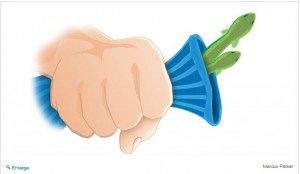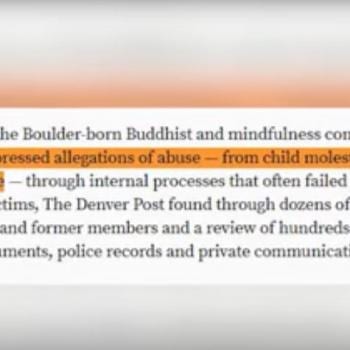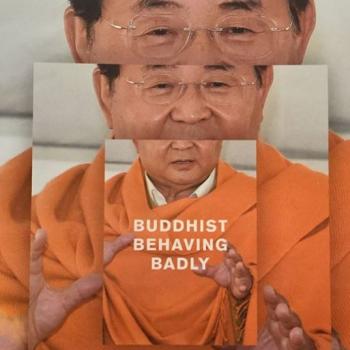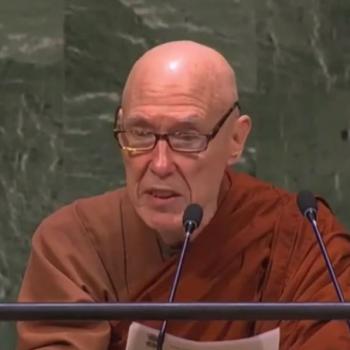
Contemporary Work and Debates
[this is part four of a series of posts based on a 27 February talk I delivered for the Oxford Center for Buddhist Studies; click for parts one, two, and three.]
As my paper title (“Wiggling Eels in a Wilderness of Views”*) suggests, the journey of Buddhist ethics, perhaps even more so in the last 35 years, has been a trip through a veritable wilderness of views.
This phrase, the ‘wilderness of views’, comes from the Aggi-Vacchagotta Sutta (MN 72, M i. 483) as the Buddha’s response to several questions such as: ‘is the cosmos finite or infinite, are the soul and the body (Pāli: jīva and sarīra)[1] the same or different,’ and so on. Following the lead of numerous scholars who have argued that the Buddha’s teaching is ultimately soteriological, that is, meant to bring about a certain ultimate state of affairs for the practitioner, we might simply see these questions as unimportant. But in fact the Buddha goes further. Not only are certain questions unimportant to the quest for nibbāna, they are outright detrimental. For each of the ten positions given to the Buddha, he replies:
“Vaccha, [this position] is a thicket of views, a wilderness of views, a contortion of views, a writhing of views, a fetter of views. It is accompanied by suffering, distress, despair, & fever, and it does not lead to disenchantment, dispassion, cessation; to calm, direct knowledge, full Awakening, Unbinding. (http://www.accesstoinsight.org/tipitaka/mn/mn.072.than.html)[2]
Perhaps our attempts to categorize Buddhist ethics similarly fall into this wilderness of views. Perhaps we have not been asking the right questions. This is certainly the position of Charles Hallisey in his 1996 article, ‘Ethical Particularism in Theravāda Buddhism.’[3] In this article Hallisey argues that our ‘already answered’ question, ‘is there a moral theory in Theravāda Buddhism?’ has ‘distorted our perceptions of Theravādin ethics’ (p.34). Employing canonical texts, commentarial literature, and a story about a king from medieval Sri Lanka, Hallisey suggests that ‘It is certainly not obvious that we should think that all of Buddhist ethics belongs to a single family of ethical theory, especially when we take the question in a manner which encourages us to conceptualize Buddhism as analogous to consequentialism or any other family of ethical theory’ (p.35). Furthermore, [we should] ‘realize that there can be no answer to a question that asks us to discover which family of ethical theory underlies Buddhist ethics in general, simply because Buddhists availed themselves of and argued over a variety of moral theories (p.37). Given the apparent multiplicity of ethical resources in Buddhist ethics, he concludes that ‘I think we should ask whether it is possible that Buddhists approached their ethical concerns without any ethical theory at all, but instead adopted a kind of ethical particularism’ (ibidem).
Maria Heim, echoing Hallisey’s concerns in 2007, writes that, ‘When the broad generalizations become too broad, as they invariably must when the entirety of the vast historical tradition of Buddhism is taken into account, the much vaunted careful attention to historical and empirical particularity slips away’ (2007, p.109). Discussing Keown in particular, she writes:
For Keown the first task of Buddhist ethics is to determine which family of moral theory it belongs, and to classify it accordingly; he argues that “the Buddhist moral system” bears close affinities to Aristotelian virtue theory (21). But the holistic move that makes this comparison possible is particularly regrettable. It forces Keown to omit entire schools of Buddhism that do not easily conform to an Aristotelian model (we find no mention of East Asian forms of Buddhism in his book, for example). It also assumes, rather than argues, that the huge range of historically diverse Buddhist traditions articulated a single moral system. Finally, such holism elides attention to Buddhists’ own distinctive systems and styles of moral discourse, which may not easily fold into Western systems and categories (see Hallisey 1996, 1997). (Heim 2007, p.110)
Similarly, in a 2011 review essay on recent anthropological works that help further the progress of Buddhist ethics, Heim concludes: ‘The intersubjective and conditioned reality of human experience is a—or perhaps the—chief problematic that ordinary people in Buddhist contexts, as well as intellectuals like Ind [a modernist intellectual active in Cambodia in the 1920s], grapple with as they figure out how to act morally in the messy contexts of human life’ (Heim 2011). It is interesting that she uses the term ‘messy,’ as this is exactly the term borrowed by Hallisey in his 1996 article, where he states that ‘from [the 20th century Scottish philosopher W.D.] Ross, we have learned to expect that ‘in ethics everything is pretty messy, and there is not much room for the sort of moral theory’ that would meet the standards of those who look to theory to provide a list of basic moral principles’ (p.38).
* I dropped the discussion of eel wrigglers, from DN 1, the Brahmajala Sutta, at a late point in writing the paper. I wrote previously about that sutta and Eel Wrigglers here.
[1] For jīva cf Latin vivus: alive, fresh, living.
[2] [view X] kho vaccha diṭṭhigatametaṃ diṭṭhigahanaṃ diṭṭhikantāraṃ diṭṭhivisūkaṃ diṭṭhivipphanditaṃ diṭṭhisañañojanaṃ, sadukkhaṃ savighātaṃ saupāyāsaṃ sapariḷāhaṃ. Na nibbidāya na virāgāya na nirodhāya na upasamāya na abhiññāya na sambodhāya na nibbānāya saṃvattati.
[3] Published in the Journal of Buddhist Ethics (http://blogs.dickinson.edu/buddhistethics/) Paper presented in a panel on “Revisioning Buddhist Ethics” at the Annual Meetings of the American Academy of Religion in Philadelphia, 20 November 1995.











